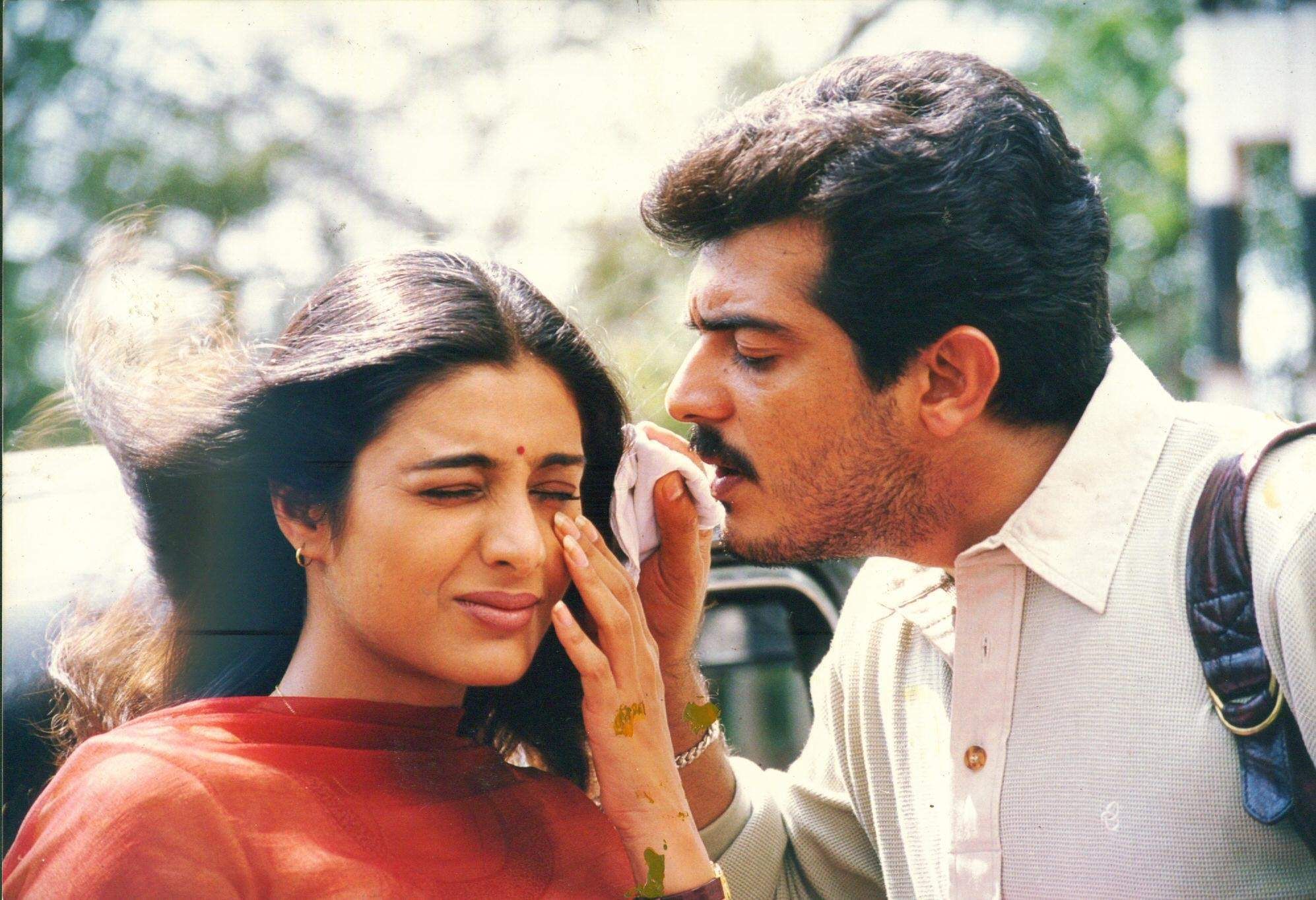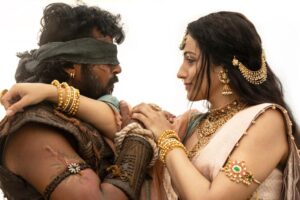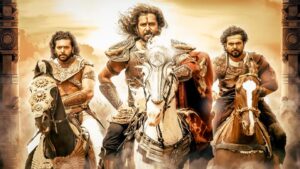
Classicists often examined the connection between music and image. Likewise, Indian systems of music – Hindustani and Carnatic – depend a lot on romantic verses. These words/lyrics were often penned by literary greats for their spouses, mistresses or muses. Indian film music stemmed out of these very same styles, is no different. If every lyric describes, praises or resonates the picture of a lissome woman or a handsome man, their respective sound creates a correct visual in the listeners’ minds. A visual that stands for the way each of them interprets and appreciates beauty.
Talking about the visual quality of music, this mixing up of senses always invited polarizing opinions. Consider Gulzar’s evocative line, “Humne dekhi hai, un aankhon ki mehekti khushboo….” How could one sense fragrance with ‘sight’, asked many!
Indian cinema, with its famous musical format, gives filmmakers great responsibility in bringing life to countless songs and their inherent emotions. Commercial filmmakers like Raj Kapoor, Mani Ratnam, Priyadarshan and Yash Chopra (to name a few) succeeded time and again in doing so. However, one film that takes the cake and whole bakery in song picturizations that transcends lush locations and gorgeous outfits is Rajiv Menon’s Tamil film Kandukondain Kandukondain. Like several AR Rahman soundtracks, this OST also boasted of a characteristic scent. What sets his melodies apart is the way each song is visualized and shot. A cinematographer himself, Menon along with his lensman Ravi K. Chandran puts together a grand panorama of carefully picked locations, colours, right representation of forces of nature with a celestially beautiful and expressive Aishwarya Rai as the protagonist Meenakshi (Meenu). I don’t remember vivid details of the film’s plot but I do reminisce my bedroom wall adorning a life-size image of Rai from this film, all thanks to the way she mesmerised me with her performance in the songs.
The first in the list is Shankar Mahadevan’s national award-winning Yenna Solla Pogirai which incidentally features Tabu and Ajith Kumar. A redolent love ballad, imaginatively shot, the locations and costume design do justice to the words and the rhythm. Nonetheless, my “version” of the song will have Ajith courting Aishwarya in snow-capped mountains, moist jungles and dry deserts. The colour scheme would suitably match Vairamuthu’s scenic lyrics. Not that the current version is any less stunning. Musically, the moment Shankar Mahadevan croons, Sandana thendralai… my heart skips a beat, every single time.
Kannamoochi by KS Chithra features Aishwarya Rai in her regal splendour. A picture of elegance in green and similar shades, Aishwarya’s swan-like bharatnatyam moves and luminous eyes do justice to Chithra’s silky-smooth vocals. The song addresses the naughty Lord Krishna and the cinematographer puts colours green and blue to great use. Also commendable is the deft use of limited space as the song takes place at a wedding party. The duet version by Chitra and Yesudas is also quite memorable. If it were to be shot, I see it between Aishwarya and Mammootty focusing on glances and gestures, minus all movements and choreography we see in the solo version.
Sadhana Sargam is one of the few Bollywood singers who gets her diction near perfect in South Indian languages. Rendered by her, AR Rahman’s melody in Konjum Mainakkale is rather simple. It is with orchestration that he experiments. An unusual mixture of sounds with an understated male chorus, the flute interlude (Naveen) is sheer ecstasy. Coming to the picturization, Rajiv Menon visualises the number as the poetic, impractical Meenakshi’s announcement on how things should change as per her whims. Subtly put, the idea of a delicate, young girl finding her way through working-class men is creative. The masks (one of them being that of Meenakshi’s favourite poet, Bharathiyar) worn by background dancers bring alive her hard-to-conform, surrealist mind. Also, to be mentioned is the way colours intersperse in each frame. Ravi K. Chandran blends green and blue in the most romantic way possible. Catch Meenakshi on the tree swing wearing a blue saree. The motion, the atmosphere and her lively expressions are hard to ignore. There couldn’t have been a perfect closure to the song than have Meenakshi run through the field clutching her chartreuse green saree. Yet another easy concoction of green and blue, there is also a giant tree that could easily be an allegory to her equally enormous dreams.
Going forward, the Bharathiyar poem Suttum Vizhi springs in as if it were written just for Meenakshi. Tuned by Rahman and sung by Hariharan, the song appears on a rainy evening where a fully-drenched Meenakshi blurts out her romantic fantasies. Upon hearing him she immediate coos, “Bharathiyar paattu…” In true knight in shining armour mode, we have Abbas afloat a pontoon singing about the virginal ‘Kannamma’ and her blue, diamond-studded pudavai. Much like a dream sequence, Menon lets our imagination follow Meenakshi’s mind and the rest is about a minute of visual poetry. Yet again, green and blue form palette in this beautifully lit rain song.
https://www.youtube.com/watch?v=_2_gW4n3OkU
Shot in Scotland, the modern-sounding Kandukondain Kandukondain by Hariharan and Mahalaxmi Iyer offers ample scope for improvisations. Wearing soft curls like a goddess, Aishwarya Rai balances the soft and pacy portions of the track with equal finesse. Picturesque castles, fine selection of colours and perfect lighting in each frame, Chandran lets the chemistry between his lead players take over in this music video-like title song.
https://www.youtube.com/watch?v=CstXxovQubc
Picturized on Ajith Kumar, Tabu and Pooja Batra (in a special appearance), Smyayi seems to be one track that cashed in on Ajith’s growing popularity in 2000. Not a big favourite as a composition, the picturization is rather admirable thanks to the actors and their charisma.
https://www.youtube.com/watch?v=frSw_l_17SM
Now to the best song of the enterprise! It has Meenakshi enduring unfortunate deceit in love. Meanwhile, she is recording her debut single. Rahman’s composition radiates ferocity and pathos. Be KS Chithra’s heartwrenching rendition, Srinivas’s able background vocals or Vairamuthu’s moving lyrics, Enge Yenadhu Kavithai gives Aishwarya an opportunity to emote her heart out and she does. Ravi K. Chandran, yet again, has the perfect choice of colours and rain as catalysts.
https://www.youtube.com/watch?v=SU0K7Tid5K8
Now, now… it is not the “in” thing to eulogize the quintessential idea of beauty called Aishwarya Rai. It is far more acceptable and less objectifying (by societal standards) if one appreciates earthy beauty like, say, Radhika Apte. Fact, however, remains that Aishwarya Rai is the face that is synonymous to exotic Indian looks on this date. Hers is the kind of beauty they stereotype call ing God-gifted.
Personally, I believe Rajiv Menon’s Kandukondain Kandukondain is the film where she looked her best till date. Ethereal, yet the playful, approachable girl-next-door. Beat that!

